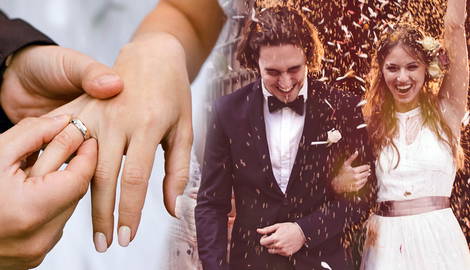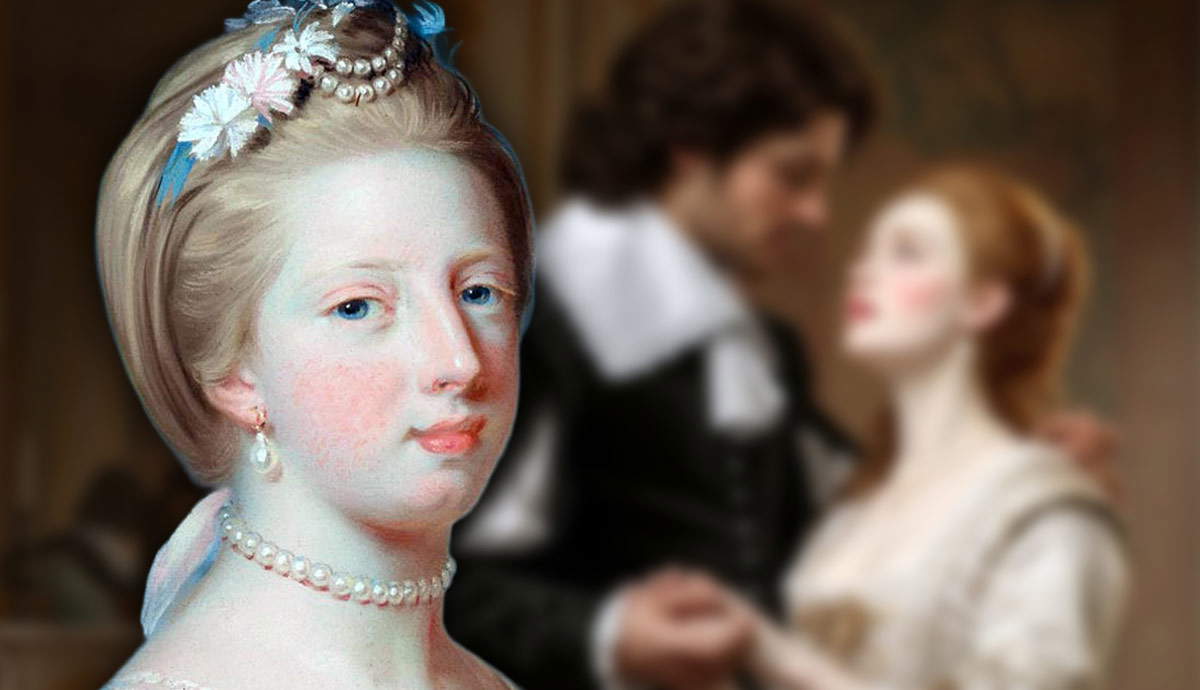
When you attend most weddings there are certain things you envision. A variety of cultures have specific wedding traditions. This article specifically focuses on Western weddings. While weddings today can incorporate different trends, there are many traditional elements within weddings. Even if these traditions are not used many people still know about them and might even know the superstitions behind the actions.
Many of these wedding staples such as bridal outfits and accessories, pre-wedding activities, and even those involved in the wedding have an interesting historical background deeper than just reasons like “fertility.” So, what are the stories of some of the more well-known Western wedding traditions, and why do many of them seem to stem from Ancient Rome?
The White Dress

Most people think that white dresses are related to the idea of purity. That is the symbolism they now represent, although historically blue had been the original color to mean pureness and faithfulness. It was a trend started by Queen Victoria at her wedding to her husband Albert. Before this event many women wore their best church dress to their weddings, which were unlikely to be white due to the color being impractical at the time for stains and keeping them clean in a time when clothing was not often ready to wear.
However, Victoria wasn’t the first Queen to wear white. Mary Queen of Scots wore a white gown to her wedding to the French prince due to liking the color. But the wide distribution of Victoria’s white dress trimmed with lace through published illustrations allowed many to see it. People began copying Victoria until the 20th century when it became the primary wedding gown color in the United States. Fashion trends continue to change over time. Although now it is more common and less scandalous to see wedding gowns in a variety of colors, the dominant color in any bridal gown boutique is still white.
Veils

There are many reasons why brides began to don veils as part of the wedding ensemble, and it does vary by culture. Most agree that the origins of the wedding veil date all the way back to Rome. There were concerns that that wedding and the couple could be attacked by evils spirits – or in later Christianity, demons. By veiling herself while walking to her husband and getting married, a bride was able to successfully hide and not have her future marriage, children, and happiness ruined.
Much like white wedding dresses were not always the norm in the West, veils weren’t always white. They were fully or partially red, making them hard to see out of and often requiring help to make it to the groom. Queen Victoria influenced the modern white color as she did for her bridal gown. As veils became more of a fashion in Western marriages and less about religion or protection they shifted with fashion trends, offering lengths from cathedral to a barely their birdcage.
In Jewish culture part of the wedding ceremony includes the badeken, with the groom placing the veil over the bride and lifting it off art the end of the ceremony when they are married. There are various interpretations on how and why that ceremony came about.
The Bouquet

Flowers have been used for communication; something called the language of flowers. This “language” was something that many young ladies were brought up to know. It was especially popular in Victorian times when many families had guidebooks that stated what flowers meant. Suitors could relay messages on their intentions with young ladies depending on what flowers were chosen in delivered bouquets.
To get to the historical importance of bridal bouquets we again travel back to Ancient Rome. Herb bundles of rosemary and thyme were especially popular not only for their strong scent but protective qualities.
As to why it’s tradition to throw the bride’s bouquet to all the single friends, the answer is simple. When a bride gets married everyone wants her to have good luck. In some places bridal gowns would be ripped at while the bride was wearing it to gain a keepsake of luck. By the 14th century it was the flowers that meant good fortune and fertility, which later turned into the tradition that you catch it you will be next to happily married. Other thrown items at weddings also have their roots in fertility including rice and the garter – which originally were the bride’s stockings that the groom would toss out the window to rowdy party guests.
Wedding Party

There are several historical reasons why traditional Western weddings have “wedding parties” or attendants who stand up with them and why they dress up the way they do. A matron of honor was there to help the bride and be a moral role model on how to be the perfect wife.
For the Romans to confuse those evil spirits who were intent on messing things up, five women and five men dressed similarly to the bride and groom would stand with them. The idea being that the spirits wouldn’t know who the couple was, and somehow the spirit couldn’t affect everyone. It wasn’t just spiritual protection that the party was supposed to provide, but physical protection as well.
In Anglo-Saxon times, Groomsmen or “knights” were often there to fight off angry people that didn’t want the wedding to take place, or those who would steal the bride for themselves (or prevent the bride from escaping a wedding she wasn’t interested in). Some brides were even kidnapped from neighboring villages. Sometimes in these cases the groomsmen and “best man” were there to stop angry villagers coming back for the kidnapped bride.
Bridal Shower

Today bridal showers are not a given. Many decide not to have them for a variety of reasons, whether they plan to elope or have a smaller party, they don’t want to get gifts from family, or they simply feel they don’t need anything. The idea of giving gifts, whether physical or monetary in value comes from Europe in the 1500s.
Dowries were mostly expected from the bride and her family when they went to the groom. Especially when the bride came from money, marriages were a transaction instead of a love match. This could include presents given by friends and family to see the new couple on their way.
The reason we now call these parties “showers” can be traced back to the late 1800s, when tiny gifts were loaded into parasols held over the bride’s head, so the gifts and good fortune for the wedding could rain down on her. When magazines began printing this trend it spread and eventually became the modern party with food, gifts, and games.
Present Day

Across much of today’s Western society, it is ultimately up to the couple to decide how they would like their wedding to be. Still, many enjoy incorporating traditions. In Western weddings in the United States, many of these traditions, like the brides wearing white, veils, celebrations surrounding the wedding, and activities during the reception often are deeply rooted in history. Rather than familial traditions passed down from one generation to the next, these come from rooted traditions and superstitions often with the hope of blessing the marriage and making it successful for many years to come. Still others have more sinister reasons. But wherever they came from, these seven traditions (and many more) can still be entertaining to learn about and experience during weddings.










